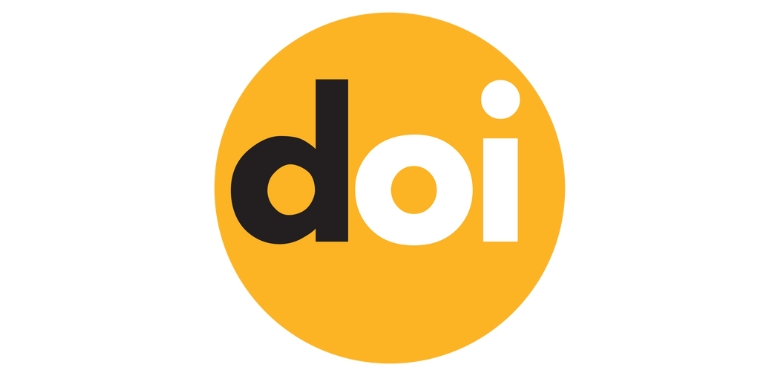Determination and classification of human blood type using maching learning image processing and support vector machine (SVM) methods
DOI:
https://doi.org/10.63053/ijset.102Keywords:
Blood Group Classification, Machine Learning, Image Processing, Support Vector Machine SVMAbstract
The importance of blood grouping in various medical and health fields is important. Also, the problems in blood group identification and the need to use artificial intelligence methods for more accurate blood group prediction are discussed in this section. The use of machine learning algorithms, especially deep learning and support vector machines, is examined for this purpose. The use of algorithms such as SVM, deep neural networks, decision tree machines, and reinforcement learning are mentioned. Various articles in the fields of biometrics or genetics have also addressed this topic.
. Support Vector Machine SVM The SVM model is a powerful algorithm for data classification that separates data by creating a decision line between categories.
- In this paper, SVM is used to predict the blood group of individuals based on various features (such as age, gender, and genetic data). Choosing a suitable kernel such as linear kernel or radical basis kernel (RBF) to improve the prediction accuracy will be one of the important parts of the paper.
The main methods and techniques used in the paper for blood group prediction are explained. These methods are usually divided into two categories: deep learning and support vector machine (SVM).
In an operational environment, images of new blood samples are collected and preprocessed, features are extracted and fed to the SVM model to determine the blood group. By following these steps and using machine learning tools and libraries such as scikit-learn in Python, an efficient system for determining human blood type can be created using machine learning and SVM. c) Statement of the main research problem: Pre-transfusion tests are necessary for blood transfusion. Although the donor is universal, if the blood types are not similar, blood transfusion reactions can occur. Various systems have been developed to automate these tests, but none of them have the ability to perform timely analysis for emergency situations. One of the new methods used in the field of classification and diagnosis of human blood types is image processing and the use of artificial intelligence techniques, which leads to increased detection accuracy and increased detection performance. To determine ABO and Rh blood types, using existing techniques, it is necessary to use some identifiers. To evaluate the performance of this proposed system, a microarray database is used, which includes breast cancer, leukemia, and bone marrow and lymphoid cancers from the Stanford University microarray database. For this purpose, this system is based on the plate test method. It is small in size and easy to carry
References
- Hegde, Roopa B., et al. "Comparison of traditional image processing and deep learning approaches for classification of white blood cells in peripheral blood smear images." Biocybernetics and Biomedical Engineering 39.2 (2019): 382-392.
- Rodellar, J., et al. "Image processing and machine learning in the morphological analysis of blood cells." International journal of laboratory hematology 40 (2018): 46-53.
- Albargathe, Salma M. Boubakar Khalifa, et al. "Blood vessel segmentation and extraction using H-minima method based on image processing techniques." Multimedia Tools and Applications (2020): 1-18.
- Liu, M. C., et al. "Sensitive and specific multi-cancer detection and localization using methylation signatures in cell-free DNA." Annals of Oncology (2020).
- Khalilabad, Nastaran Dehghan, and Hamid Hassanpour. "Employing image processing techniques for cancer detection using microarray images." Computers in biology and medicine 81 (2017): 139-147.
- Sarikan, Selim S., A. Murat Ozbayoglu, and Oguzhan Zilci. "Automated vehicle classification with image processing and computational intelligence." Procedia computer science 114 (2017): 515-522.
- Ferraz, Ana, Vítor Carvalho, and José Machado. "Determination of human blood type using image processing techniques." Measurement 97 (2017): 165-173.
- Zuo, Fei. "In-body ultrasound image processing for cardiovascular interventions: A review." Neurocomputing 144 (2014): 38-46.
- Kugamourthy, Manoujitha, and Oshini Goonetileke. "eOphthalmologist--Intelligent Eye Disease Diagnosis System." 2014 5th International Conference on Intelligent Systems, Modelling and Simulation. IEEE, 2014.
- Ravindran, G., et al. "Determination and classification of blood types using image processing techniques." International Journal of Computer Applications 157.1 (2017): 12-16.
- Woźniak, Marcin, and Dawid Połap. "Object detection and recognition via clustered features." Neurocomputing 320 (2018): 76-84.
- Zghal, Nadia S., and Nabil Derbel. "Melanoma Skin Cancer Detection based on Image Processing." Current Medical Imaging 16.1 (2020): 50-58.
- Jothilakshmi, R., and Ramya Geetha SV. "EARLY LUNG CANCER DETECTION USING MACHINE LEARNING AND IMAGE PROCESSING." (2020
- Deore, Yogita Ashok, and Namrata D. Ghuse. "Efficient Image Processing Based Liver Cancer Detection Method." IJETT 3.3 (2020).
Downloads
Published
How to Cite
Issue
Section
License
Copyright (c) 2025 Authors

This work is licensed under a Creative Commons Attribution 4.0 International License.












